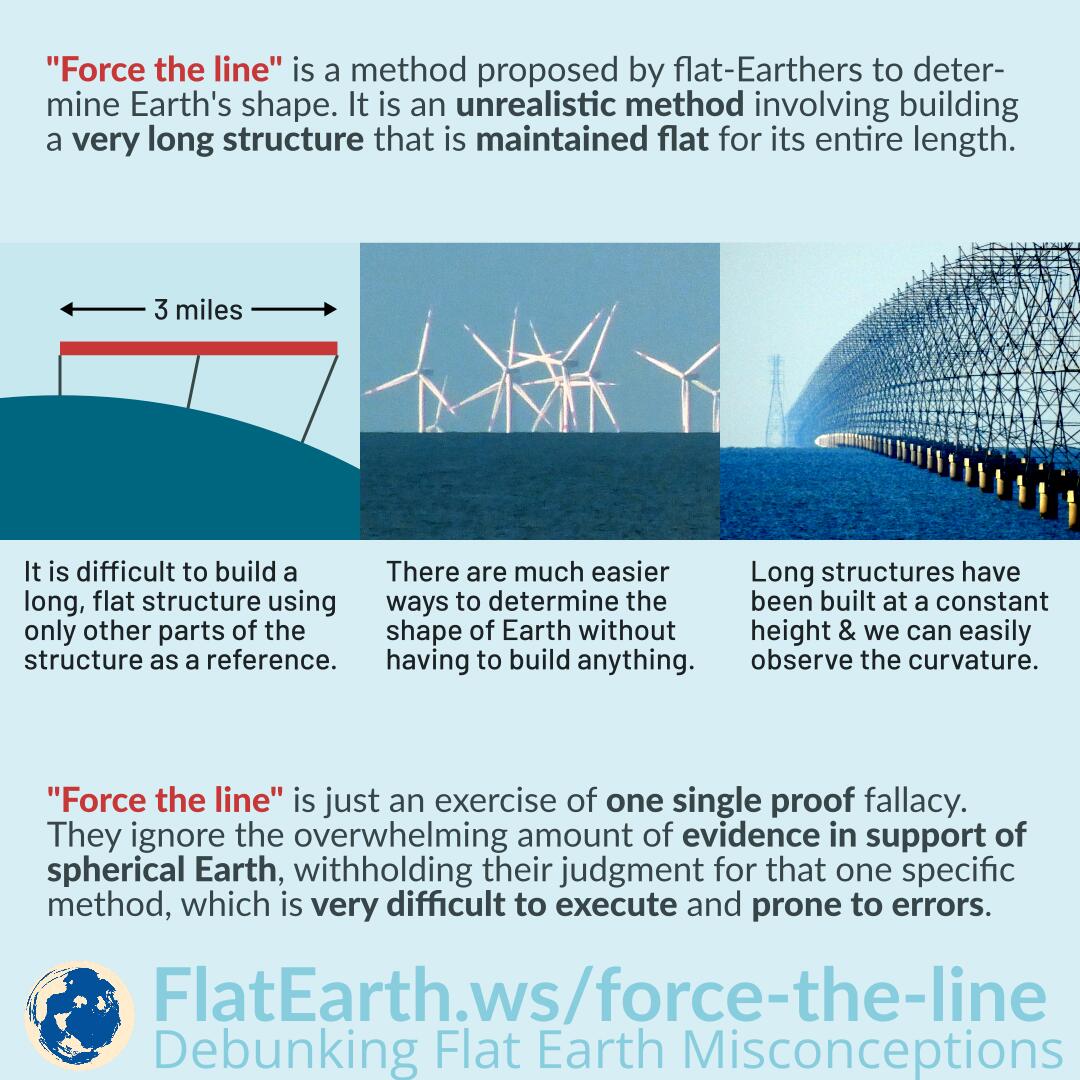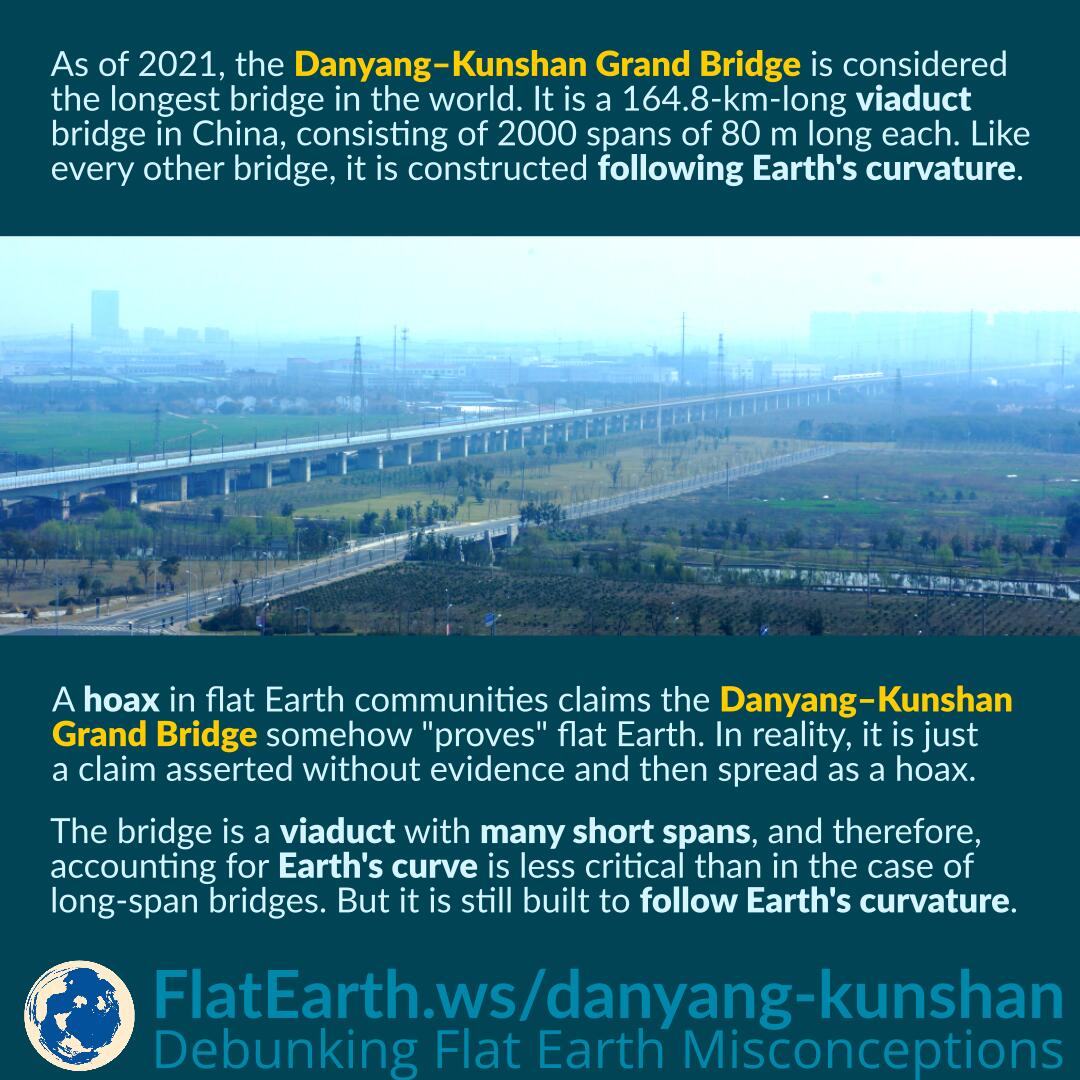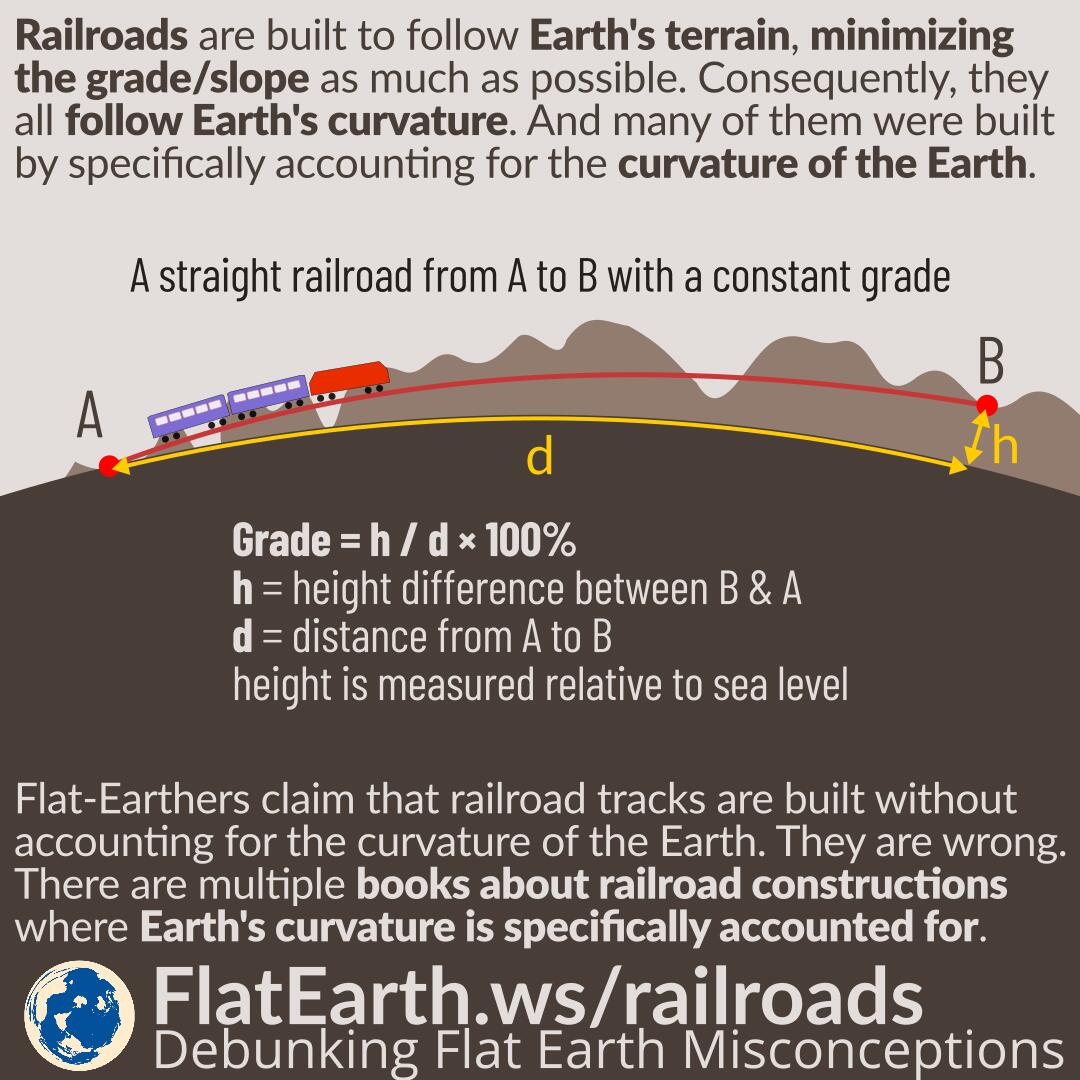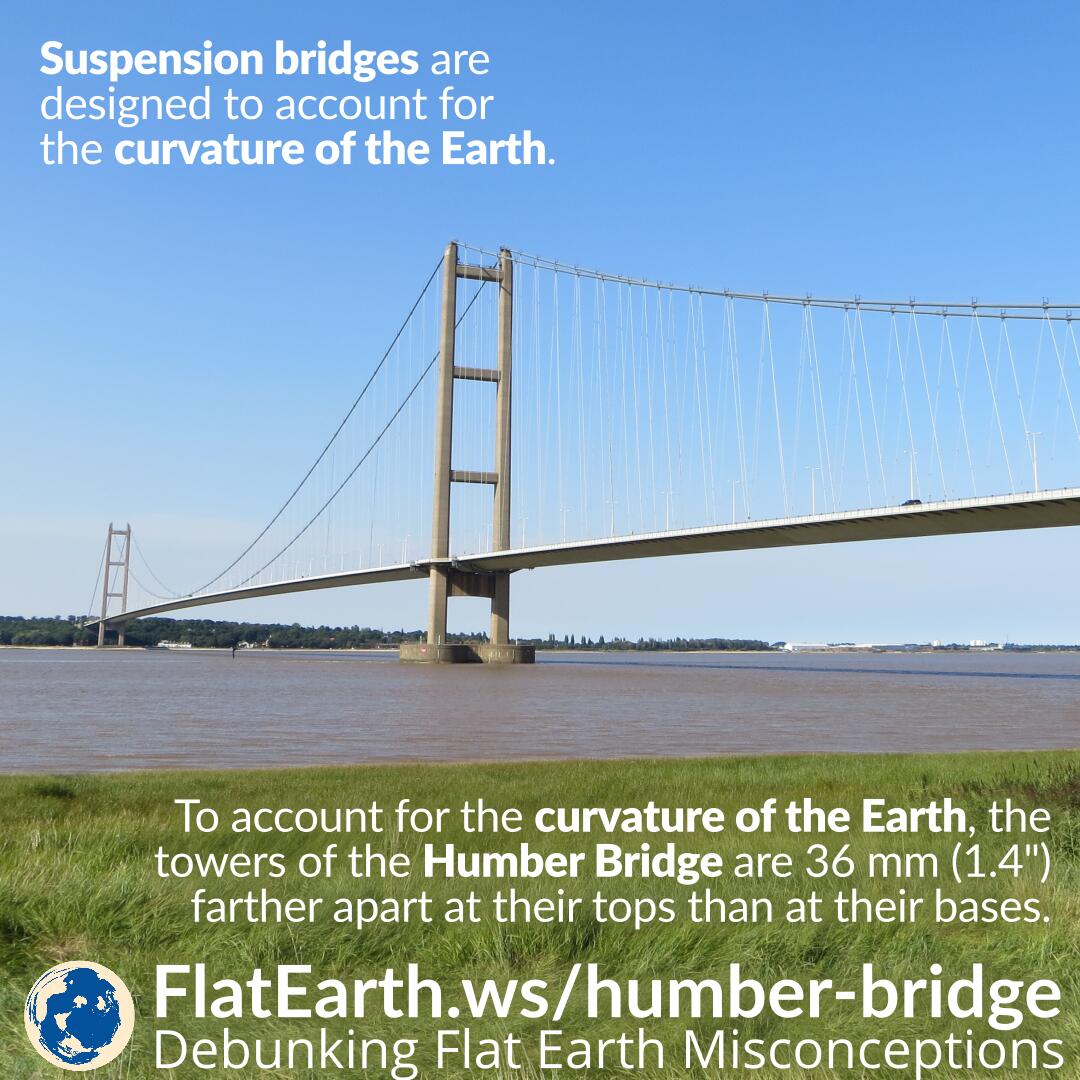“Force the line” is a method proposed by flat-Earthers to determine Earth’s shape. It is an unrealistic method involving building a very long structure that is maintained flat for its entire length.
“Force the line” is just an exercise of one single proof fallacy. They ignore the overwhelming amount of evidence in support of spherical Earth, withholding their judgment for that one specific method, which is very difficult to execute and prone to errors.







